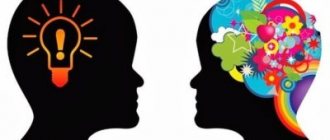Development of creativity and art
We do not equate creativity with artistic ability. Making art, drawing, playing a musical instrument are all excellent exercises for developing creativity, but in no way define what it means to be a creative person.
More broadly, creativity is key to finding joy and meaning in life. It's about co-creating with others and doing your part to, as Martin Luther King said, bend "the arc of the moral universe toward justice."
Developing creativity doesn't mean waiting for a flash of inspiration. Rather, it is to have the enduring ability to create at will.
The process of developing creativity requires understanding, practice and, in our experience, the gradual transformation of internal habits while strengthening the abilities of play, receptivity, novelty and openness.
Art can illuminate and nourish; can help formulate ideas and deepen concepts.
Not a made up story
My close friend Mikhail worked as an ordinary middle manager. He didn’t particularly like his work, but it brought income and was a kind of “duty.” Wood carving brought real joy to Misha's life. But he pursued his hobby from time to time, and there were no bright ideas for creating masterpieces.
Everything changed when my friend began to purposefully develop his creative streak! Inspiration came to him, and he created several amazing products at once. Now Mikhail is a woodcarver, in demand and successful!
Useful video on how to develop creative thinking:
How to develop creative abilities and creativity?
The next thousand words will tell you five ways to develop creativity. We're starting a serious conversation about what it means, what it feels like, and what it takes to be creative in today's world.
So, look for ways to develop your creativity.
#1: Be receptive
The key to developing an individual's creative abilities is to develop sensitivity, the ability to come up with new ideas, adopt new views and perspectives, and perceive new opportunities.
Cultivating and developing this openness requires constant internal effort. You need to gradually transform your habitual train of thought, while at the same time strengthening your abilities for attention, silence, humility and other qualities.
Once established, this internal organization will grow, develop, and strengthen into true creative potential.
Recommended reading → Books for motivation: a selection of 29 amazing books
A creative person is receptive to the signals around him, he accumulates creative potential just as lightning collects energy from the atmosphere
#2: Become a beacon
A simple but useful metaphor: a lighthouse.
To operate a beacon, you must walk up to it, open the door at the bottom, go up the stairs, open the door at the top, sit at the controls and be able to use them effectively.
When developing creativity, you must unlock your thinking. This means that you must prohibit yourself from certain mental and feeling habits. You need to “rise” to another kind or another “level” of thinking. You will have to work to do this.
Developing creativity transforms old habits and opens up new abilities. If you have reached this stage, then you have already become much more creative. You are in a lighthouse and control it, illuminating the night.
People create their thoughts and words without even knowing how they do it. As a result, they lose sight of the fact that thought and speech come from what at first glance appears to be nothing; figuratively speaking, they appear out of thin air. However, when this happens, we ourselves give them shape.
This is what creativity is - the first manifestation of creativity in a person.
The flow of attention takes shape. We think of it as a "downward" flow. At first there is nothing, then attention and thinking appear, then thoughts (ideas, words, pictures, etc.) are formed.
Thus, we move from nothing through our thinking. This process stops at a complete thought or form.
To move from a complete thought upstream towards dynamics - to leave the habit of thinking with thoughts, words and other complete “forms” and enter into moving or “living” thinking - this is “climbing the ladder” in our metaphorical lighthouse.
There, when controlling the light, things get more interesting.
#3: Walk through the fire
Every creative process is built around the “gap” between the initial impulse of the start and the final result that appears at the end.
There is a tension between these poles because if the process is truly creative, it is unpredictable in nature.
Development of creative abilities (sculpting is NOT necessary)
This tension inevitably causes fear and trepidation, especially when the stakes are high.
To create something truly new means to follow this path. The uncertainty that accompanies the creative process forces us to separate what is important from what is simple and familiar.
It is a process of purification and humility, the fruit of which is vision, understanding and wisdom.
Walking through the flames is evidence of this process. The figure passes through the fire and is simultaneously enlightened. Creative power is gained through suffering from imperfection, failure and severe challenges in order to break through to the next level.
#4: Restore morale
We usually think of morality as something “subjective” or “religious,” but we need to reconsider this view.
The Infinity Filter is a way of thinking about creativity. We humans give shape and definition to the infinite possibilities of thought, feeling and will.
The top of the “filter” is open like a funnel to the wide expanses of the infinite. We extract from this limitless meaning a very small part of it. We then refine it until we have a powerful passage, an idea, a word, a sense of balance or harmony, etc.
We select a small piece of infinity and filter out everything else. This is our morality .
Can we wrest our creative power from the clutches of the desire for narcissism and self-destruction?
We recommend reading → 5 mistakes in communicating with a child + methods of productive communication
Can we turn these gifts into the ability to serve life and, most importantly... love?
The future is shaped not as an inevitable consequence of our DNA and our psyche, but as a consequence of our choices, moral or otherwise.
#5: Compost yourself
Compost is the physical expression of decay and growth. As organic matter breaks down, enzymes, bacteria and other living organisms convert what was once waste into nutrients for the next cycle of life.
It can also be a symbolic expression of the process of decay and rebirth occurring within a person or even within an entire culture.
The key to this image is a person developing his creative abilities. This transformation begins within him and only later manifests itself as change on a larger scale.
To become creative, you need to commit yourself to the process both internally and externally. We need to compost old paradigms that contribute to social dysfunction and create rich soil for healing and regeneration through collaborative creative efforts.
Through the process of transformation, the cultivation of creative abilities is manifested.
Learning to develop imagination by observing the world around us
Take a walk in the park, get out of town, teach your child to admire the beauty of the world around him. It’s interesting to come up with images while looking at clouds, or to guess objects by their outlines late in the evening. If you take a magnifying glass or binoculars with you, observing birds and insects will be even more interesting.
Artist Rob Sayaj Jr. uses a tablet to create these cloud paintings.
Arm yourself with a whiteboard marker (it washes off easily) and try to draw your own shapes on the glass with your child.
Better Creative Thinking Skills
Next, let's look at what skills are needed to develop creative abilities?
#1. Analysis
Before you can think about anything creatively, you must be able to understand it. This requires the ability to carefully examine things in order to comprehend their true meaning. If you are looking at a text, a set of data, a lesson plan, or an equation, you must first analyze it.
#2: Keep an open mind
Creativity and developing creativity involves thinking about things differently within the context in question.
You must put aside any assumptions or preconceptions you may have and look at things in a completely new way. By approaching a problem with an open mind, you give yourself the opportunity to think creatively.
#3. Problem solving
Nobody wants to associate with creative people just because they impress. The world needs people who can solve problems.
Therefore, it is important to emphasize not only your ability to think creatively, but also to use your creativity to solve important problems.
#4. Stay organized
This may seem counterintuitive: aren't creative people known for being disorganized? In fact, being organized is an important part of creativity.
Although you may be a bit of a cluttered thinker, when you come up with a new idea, you need to articulate it in a way that other people can understand and implement your vision. Being able to create an action plan with clear goals and timelines is vital.
#5. Communications
People will only appreciate your creative idea or solution if you can effectively communicate it to them. Therefore, you need to have strong written and oral communication skills.
You also need to be able to think about a situation fully before thinking about it creatively. Therefore, you also need to be a good listener. By asking the right questions and understanding the problem, you can find a unique solution.
11 Practical Tricks to Improve Creative Thinking
“Creative thinking is not a talent, it is a skill that can be learned.
It empowers people, enhancing their innate abilities, which improves teamwork, productivity and, where appropriate, profits.” Edward de Bono
#1. You need empowering rituals.
One of the best ways to inspire yourself and create every day is to develop rituals that you use regularly. This will prepare your brain to be creative.
For example, your ritual could be reading in the morning, listening to music, meditating for a few minutes, or taking a few deep breaths.
#2. Try to create something every day
Create something every day, even if it only takes 5 or 10 minutes. Try writing articles, drawing mind maps, developing business models, concepts, and collecting and developing ideas.
#3 – Don't be disciplined, be dedicated
Luciano Pavarotti once said: “People think I am disciplined. This is not discipline, but devotion. There is a big difference between them."
#4. Take breaks.
When you feel stuck with an idea and are at a dead end, take a break. Trying to force yourself to find a solution will only lead to exhaustion.
We recommend reading → How to recharge your batteries: 15 effective ways
Try getting up from your desk, going outside or to the vending machine, getting a coffee, talking to people, and looking at the scenery outside your desk.
Some ideas will strike you in the most unexpected places, and you will be surprised that you found a solution to a problem even though you didn't work on it.
A person's creative abilities can manifest themselves at any moment.
#5 – Make a list and evaluate your ideas
Sometimes the opposite of writer's block happens - you just have too many ideas! While this is good, it can be confusing.
You can sort your thoughts by making lists. Write down every idea that comes to your mind and determine which one you think is best.
#6. Ask the right questions
Whenever you need to get creative, always start with the “why, how, what, when” questions and try to answer them.
#7. Have fun with colleagues or friends
Having fun with colleagues or friends is a proven and popular way to generate ideas. This is a great time to open yourself to the thoughts of others in order to refine your ideas.
The best way to do this is to listen to ideas without judgment. Judging an idea without even hearing the full concept will create hostility within the company. This is how the development of creative abilities does not occur.
#8. Use rush hours
Some people are more creative and productive at certain times of the day, while others are more creative at the peak of their emotions. Get creative in this moment and let your creative juices flow freely.
Creativity can also be improved if you create in a specific place or if you surround yourself with certain music.
This method works differently for everyone. Decide what time of day, emotions or environment you need to create to make it easier to create. Just do what works for you.
#9. Build a network
Attract creative and inspiring people into your social circle and communicate with them regularly. By listening to new perspectives and looking at your problems from different angles, you can improve your ideas.
An outside perspective will help you understand the problem and find solutions.
#10. Take risks
Risk can be a double-edged sword, but the more you avoid it, the more you leave your ideas unchanged.
Risks allow you to think outside the box and look for unconventional ways to solve a problem. Creative thinking doesn't require you to conform to the norm. In fact, most brilliant concepts are born from various deviations.










